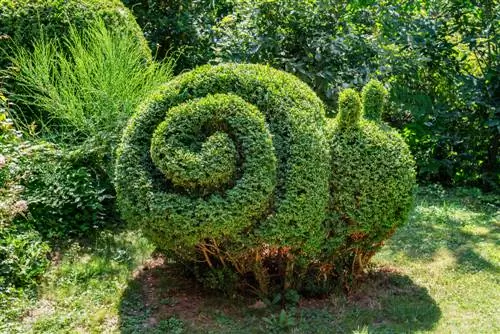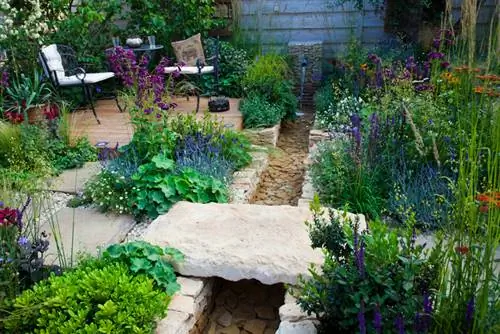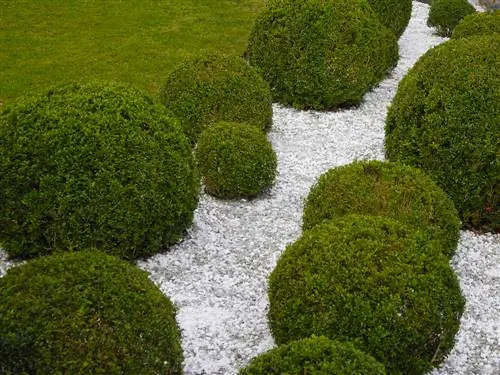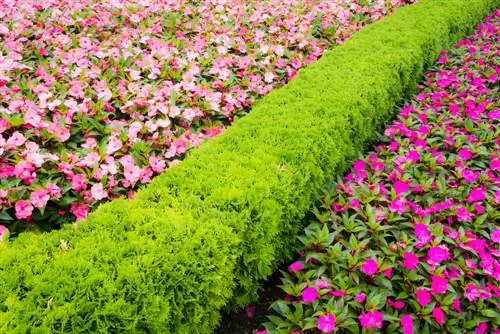- Author admin [email protected].
- Public 2023-12-16 16:46.
- Last modified 2025-01-23 11:21.
Boxwood has been used for centuries as a topiary for the most imaginative structures and figures. The fantastic Renaissance and Baroque gardens in which the Buchs had its heyday are famous. Even today, fascinating living sculptures can be created with comparatively little effort.
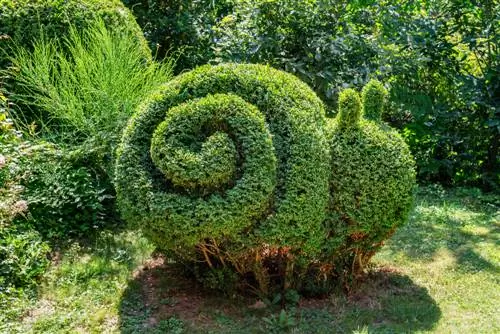
What shapes can be created with a boxwood?
Boxwood can be used to create various shapes, such as spheres, pyramids, cuboids, spirals, cones, columns, animal figures, chess pieces and imaginative hedge patterns. Templates are helpful for topiary cutting; at least two prunings per growing season are necessary to maintain the shape.
The most beautiful shapes for the box
Basically, boxwood is suitable for any shape imaginable, as long as you don't cut into the bare, brown wood. Only remove the light green, new shoots and do not cut too deeply - otherwise unsightly holes could arise that are difficult to close again. The following shapes for boxwood are particularly popular:
- Ball: classic boxwood shape, it is best to use a template
- Pyramid: fits well in formal gardens, also for Japanese garden style
- Cuboids, cubes and other rectangular shapes: for formal gardens, also beautiful as a small tree with a trunk
- Spiral: sophisticated, exciting shape
- Cones: pretty as small or large cones
- Column: instead of columns made of wood or stone
- Animal figures: sometimes look more sophisticated than they are; a peacock is quite easy to cut
- Chess pieces: a real eye-catcher in the front garden
- imaginative hedges: beautiful garden pictures can be created from dense boxwood hedges
The latter in particular is known from the baroque gardens of the 15th and 16th centuries: low, curved hedges create a wide variety of shapes and patterns when you look down on them from above. After all, who says that a hedge always has to be strictly straight?
Inclusion in garden design
Whatever shape you choose, it is important that it fits harmoniously into the respective garden style. For example, in a wild natural garden, an avenue of low boxwoods with a square-cut crown might look a bit out of place. To check the effect before pruning, it is best to draw a plan of your garden and also think about how you will insert the cut box. Do you want this to stand as a single eye-catcher in the middle of a lawn or do you want to create an entire avenue of books along the main path, which is also integrated into a ground-covering flower landscape?
Frequent pruning maintains the shape
Keep in mind that you have to trim the box figures regularly so that they retain their shape. In principle, at least two prunings per growing season are mandatory, with the shape pruning taking place between mid-May and mid-June, while the maintenance pruning must be carried out by mid-August at the latest. If necessary - for example with vigorously growing varieties - you can use scissors more often, provided you keep an interval of at least four weeks. In this case, the main pruning time is between April and September; boxwood is not pruned in winter.
Stencils make cutting easier
If you already have experience cutting book figures, you can often cut them freehand. Everyone else uses a template that makes topiary cutting practically child's play. You can purchase a wide variety of stencils, but you can also make them yourself. The latter is useful, for example, for cutting geometric figures.
Tip
Frequent pruning also has the advantage that this box develops particularly dense branching.

